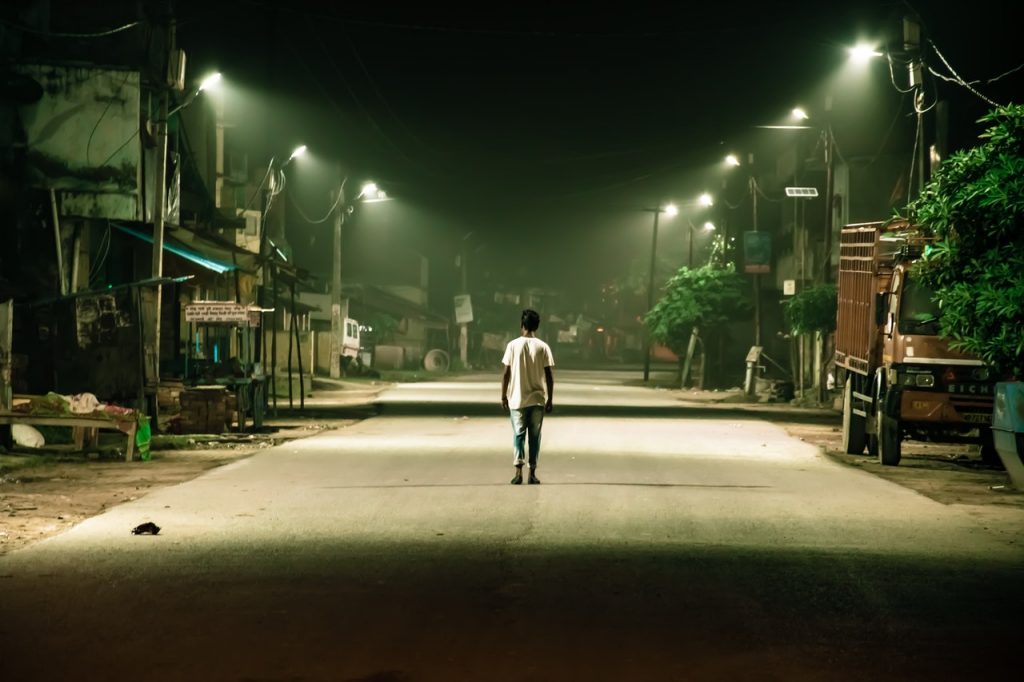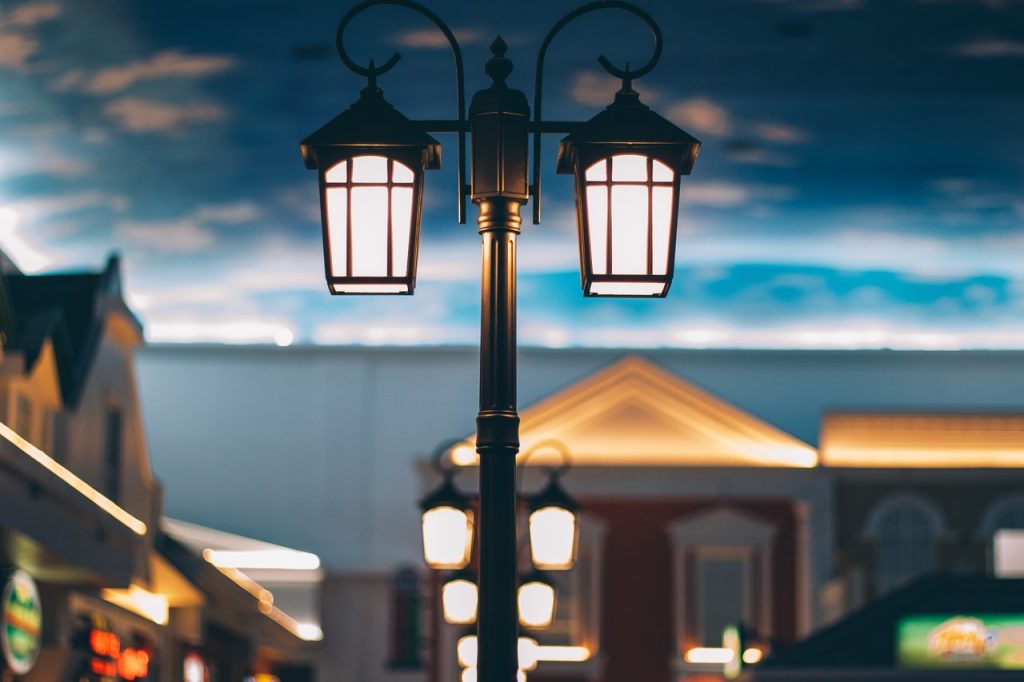1. Reasonable Choice of Illumination
On the one hand, the reasonable choice of campus street lamp illumination can ensure nighttime lighting and create a harmonious campus atmosphere, and on the other hand, it can save construction costs and electricity. Nowadays, new campuses usually have buildings with various functions such as student dormitories, teaching buildings, libraries, canteens, office buildings, squares and playgrounds with different patterns and large and small roads with different functions.
Campus road users are mainly teachers and classmates, and their vision is different from that of motor vehicles. The selection of street light illumination should be different from urban roads, and should not pursue high brightness and high standards. It should be based on the division of functional areas with appropriate illumination, and focus on creating a quiet and comfortable campus atmosphere.
In addition to the campus main roads, important passages, cultural squares and other areas with high traffic flow, the campus street lights should appropriately increase the illumination (the average illumination maintenance value of 20-30lx can be selected) to meet the safety at night. For facilities such as areas, the average illuminance maintenance value of 8 to 10lx can be selected as medium and low-intensity illuminance. For the lakeside and lawn around the campus, as well as other areas of the campus suitable for strolling and rest, the average illuminance maintenance value is 5lx, and the minimum illuminance 1lx can meet the requirements.
2. The Layout and Selection of Campus Street Lights
The layout of campus street lights depends on the width of the road, the uniformity of lighting and the coordination of the campus environment.
Under normal circumstances, the layout of campus street lights can be divided into three categories: single-sided layout, double-sided (symmetrical, staggered) layout, and center-symmetrical layout. The street lamps with symmetrical arrangement have good viewing performance, but the uniformity of illumination is not as good as staggered arrangement. Campus street lights emphasize more on campus beautification, and the staggered arrangement on both sides is less used.
In the choice of the layout method of campus street lamps, when the road surface is narrow, the installation height of the lamps is generally equal to or greater than the effective width of the road surface. When the pavement is wide, the installation height is greater than 50% of the effective width of the pavement, which is beneficial to the needs of efficient lighting.
Center-symmetrical arrangement is suitable for double-width roads with isolation belts in the middle or roads with wider sidewalks beside motor vehicle lanes. The lamps are installed with Y-type and T-type poles, and the installation height of the lamps is equal to or greater than the effective width of the road on one side.
When laying out campus street lights, it should be distinguished whether the road is a pure sidewalk, or a combination of a motor vehicle lane and a single-sided sidewalk, or a double-sided sidewalk. The width of the motor vehicle lane and the width of the pedestrian lane should be selected, and the position of the street tree, the crown and height of the street tree should be considered, and try to live in harmony with the street tree.
3. Selection of Campus Street Light Source Types
Most of the campus street lights use medium and low poles, and the light sources are mostly low power. We should actively promote the use of high-efficiency and long-life light sources, trying not to use incandescent lamps with low efficiency and short life. Commonly used light sources are metal halide lamps, high-pressure sodium lamps, high-efficiency energy-saving lamps (compact fluorescent lamps), and LED lamps.
Metal halide lamps have a high color rendering index (greater than 80), the luminous efficiency can reach 110-120 lumens/watt, and the average service life is more than 10,000 hours.
The color temperature of high pressure sodium lamps is moderate, although the color rendering index is low, but the fog penetration performance is good, the color temperature is moderate, the light efficiency can reach 110 ~ 120 lumens / watt, and the average service life is more than 10,000 hours.
The high-efficiency and energy-saving lighting effect can reach 80-90 lumens/watt, the color rendering index is greater than 80, and the average life span is 5,000 hours, but the price is low.
LED lights have developed rapidly in recent years. The light efficiency is raised to 150-200 lumens/watt, and the average service life can reach 30,000-50,000 hours. However, the use of LED lights is limited due to their own limitations, strong glare, and too strong light directionality. At the same time, the heat dissipation effect of the lamps is not good, and it is particularly easy to cause damage.
Various light sources have their own characteristics. In the past, campus street lights mainly used metal halide lamps, high-pressure sodium lamps, and high-efficiency energy-saving lamps (compact fluorescent lamps). In recent years, as the price of LED lights has dropped and the quality has become more and more stable, the use of campus street lights will become more and more popular.
4. Campus Street Light Power Supply Mode and Cable Line Selection
The campus street lights are adjacent to teaching buildings, office buildings or student dormitories, and the power supply is easy to connect. The advantage is that it is not necessary to set up special transformers like municipal roads, which reduces the power supply range of street lamps and saves investment. The disadvantage is that the control box is scattered and the management is more difficult. However, it can be solved by using a wired or wireless monitoring and management system to implement unified centralized control.
There were many overhead lines in the early days of campus street lamp power supply lines. Now new and new renovation projects often use YJV and VV cables to be buried directly or protected by casing. Considering that the campus street light system has a small capacity and a long cable, the current carrying capacity can easily meet the requirements when selecting the line cross-section.
The line voltage drop needs to be taken into consideration. On the basis of satisfying the line voltage drop, it can be considered to increase the first-level selection, leaving a margin for increasing the number of street lamps. At the same time, the power loss in the line is also reduced.
This article describes the selection of cross-section and estimation of the maximum supply radius of the cable:
The cross-section of the campus street lamp wire is small, the line is long, and the line resistance is much larger than the reactance. For simplicity, the effect of reactance is ignored in the calculation, and because the power factor of the lighting load is close to 1, only resistance and active power are considered in the calculation. From this, the simplified formula for calculating the voltage loss can be obtained as:
5. Campus Street Light Safety Grounding System
According to the International Electrotechnical Commission (IEC) standard, low-voltage power distribution systems can be divided into TT systems, TN systems and IT systems. Considering that the transformers in the main building of the campus are all D·yn11 three-phase distribution transformers with the neutral point of the low-voltage side directly grounded, two grounding methods, TT and TN-S, should be used. The UC Berkeley street lamp adopts the TN-S grounding method, and uses the street lamp foundation (the grounding resistance of each street lamp is measured at 35 ohms to 46 ohms) as the repeated grounding of the PE line, which has achieved good results in practical applications.
6. Energy-saving Control of Campus Street Lights
The energy saving of campus street lamps is not achieved by reducing the lighting level, but reasonably selecting lighting standards according to road characteristics, selecting high-efficiency lamps, rationally arranging street lamps, and reasonably determining the way to turn on street lamps to achieve the goal of energy saving.
On the basis of seasonal changes, the control design of street lights on campus should optimize the start/stop control system of street lights. And it can make necessary corrections according to the change of natural light brightness, and control it to operate in the range of natural light intensity of 15lx ~ 20lx, so as to save electric energy to the greatest extent.
7. Conclusion
Reasonable selection of illuminance, brightness and light color of campus street lamps, and reasonable control of glare will not only bring convenience to people’s life and study, but also create a quiet and comfortable campus atmosphere. The shape, height, color and arrangement of campus street lamps are also important factors affecting the campus landscape. Reasonable choice will add luster to the campus environment.





